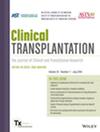Use of Normothermic Regional Perfusion in Circulatory Death Donors for Lung Transplantation in the United States
Abstract
Introduction
Use of normothermic regional perfusion (NRP) to recover donation after circulatory death (DCD) organs demonstrates increased heart utilization with favorable outcomes. Conversely, DCD lung allograft use when NRP was employed remains controversial. This is a contemporary analysis of DCD lung recipient outcomes in which NRP was used.
Methods
Utilizing the STAR-OPTN database, all adult DCD lung recipients in the United States between January 1, 2020, and June 30, 2024 were identified. NRP use was defined if the time between donor death and aortic clamp time was greater than 30 min. Recipient outcomes, including 30-, 60-, and 90-day mortality, grade-3 primary graft dysfunction (PGD), and postoperative length of stay were compared using multivariable logistic regression controlling for donor and recipient covariates. Survival analysis was performed using Cox proportional hazard modeling.
Results
Of 987 DCD lung transplants, 92 (9.4%) utilized NRP. There were no differences in recipient characteristics between direct recovery and NRP cohorts. No difference in 30-, 60-, or 90-day mortality, grade-3 PGD, or length of stay was found between cohorts. 12-month survival was equivalent.
Conclusions
Outcomes between NRP lung recipients were equivalent to DCD direct recovery recipients. Thus, donor lungs may be considered for transplantation following NRP donation procedures.

 求助内容:
求助内容: 应助结果提醒方式:
应助结果提醒方式:


